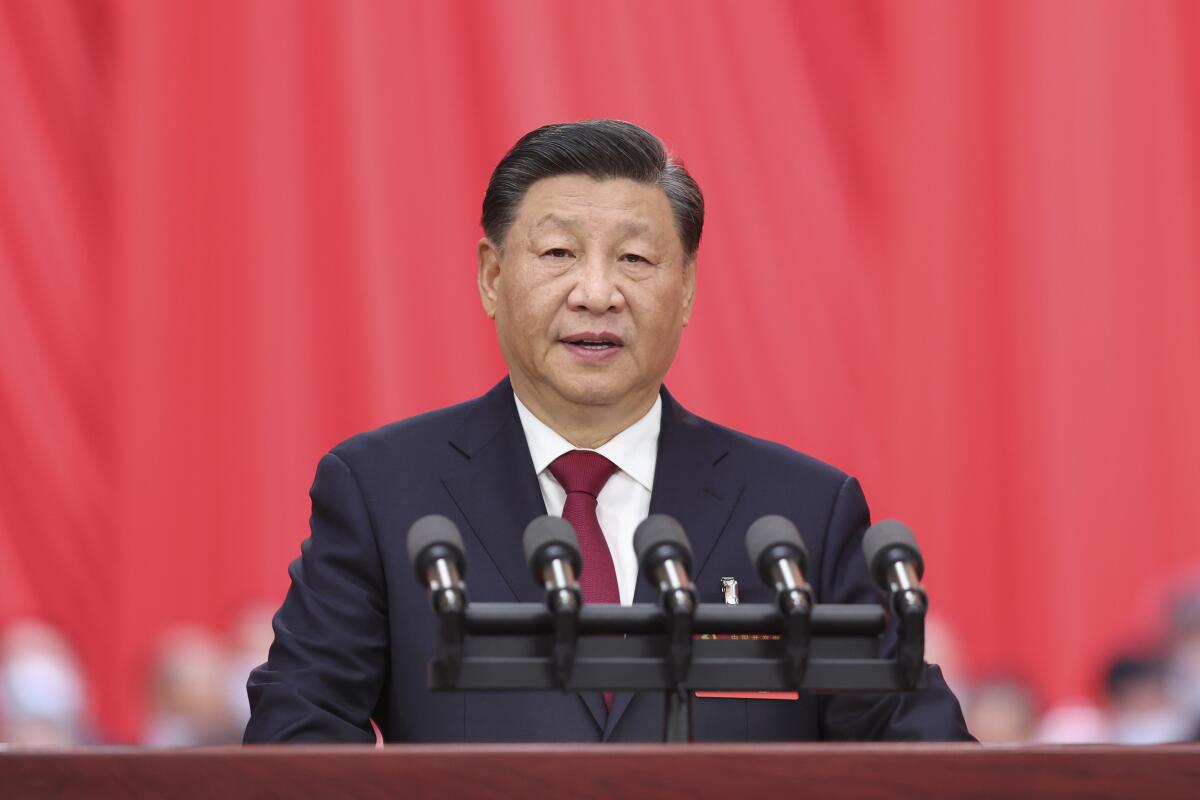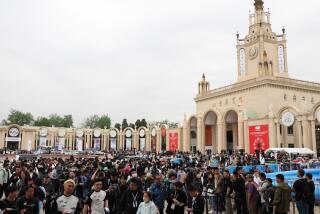Opinion: China’s economy might not be headed toward either ascendancy or decline

- Share via
Something about China encourages grandiose predictions. Just a few years ago, the U.S. Intelligence Community forecast China would emerge from the COVID-19 pandemic economically and politically stronger than the United States.
Now a popular view in Washington is that China will soon pass its economic and military peak, and the U.S will confront a declining power willing to take desperate measures, especially in the event of a confrontation over Taiwan. Beijing’s military exercises following Taiwanese President Tsai Ing-wen’s visit to the U.S. this month added to this anxiety.
But China’s trajectory could look quite different from these broad predictions. The world’s second-biggest economy is probably headed neither for ascendancy nor decline, but rather for prolonged stasis. This scenario is less dramatic but still disruptive: It would alter global economic growth and could impede future responses to shared challenges like climate change. As Washington gears up for a period of greater focus on U.S.-China relations, policymakers should prepare for a China that is effectively just running in place.
China’s slowing economy feeds into the narrative of its decline. Official GDP growth has decreased almost every year since the 2008 financial crisis, and systemic issues like debt and aging limit future growth prospects. But even skeptics believe China will continue to grow in the 2020s, increasing the total size of its economy to rival that of the U.S. In the 2030s, growth is likely to be so slow that domestic incomes stagnate and China loses competitiveness compared with commercial rivals in Southeast Asia and elsewhere. Although this will have serious consequences, it’s very different than contraction.
Another related challenge is China’s aging population. Chinese data revealed the population shrank in 2022 for the first time in 60 years, after years of decline in the labor force, even as pressure on pension and healthcare systems increases with a growing number of retirees. But raising productivity through education and the adoption of new technology can help compensate for a shrinking population. And in fact, productivity trends may have improved during the pandemic.
Predictions of impending crisis also ignore the fact that Beijing has the means to tackle its most immediate economic challenges. China’s policymakers have already taken aggressive measures to deflate the real estate bubble and to contain debt accumulation. But although Beijing has been able to respond to acute economic crises in 1997, 2008 and 2020, it has punted on the structural reforms that most economists believe are necessary to prevent long-term stagnation.
The lack of reforms has caused some to predict that GDP growth will fall below 3% annually in the medium term. And hesitance to dismantle inefficient state-owned enterprises is likely to disappoint Beijing’s hopes for innovation-led growth. Other challenges like climate change impose additional drags — a severe heat wave in the summer of 2022 shaved an estimated 0.3% off already-low GDP growth.
Stagnation rather than a crash for China carries several implications for the global economy and American decision makers. China’s contribution to global growth, which may be overstated because its rising exports can depress growth elsewhere, will shrink as its export-oriented industries become less dominant. On the other hand, China’s imports may increase. These shifts will probably accelerate the diversification in global supply chains, creating a more fragmented world economy in which China will play a less central role.
A second, related implication is that Beijing may turn inward rather than lash out over Taiwan or other geopolitical flashpoints. Stagnation could make Chinese leaders less willing or able to address shared global challenges like climate change. If, as some research suggests, an older population causes innovation to slow, China may not develop the technology needed to decarbonize its exceptionally energy-intensive economy.
Faced with rising climate-related costs and slowing growth, China may be more reluctant to help other countries reduce emissions and adapt to climate risks. Tepid growth could also cause Beijing to pull back more as a partner in global governance in areas such as ensuring financial system stability or addressing future pandemics.
American policymakers tend to think about China in grandiose terms: either on its way to supremacy or collapse. They have not spent enough time pondering what it means for China to have too little impact on the world rather than too much.
Scott Moore is director of China programs and strategic initiatives and associate professor of practice of political science at the University of Pennsylvania. He is the author of “China’s Next Act: How Sustainability and Technology are Reshaping China’s Rise and the World’s Future.” Derek Scissors is a senior fellow at the American Enterprise Institute and chief economist of the China Beige Book.
More to Read
A cure for the common opinion
Get thought-provoking perspectives with our weekly newsletter.
You may occasionally receive promotional content from the Los Angeles Times.










